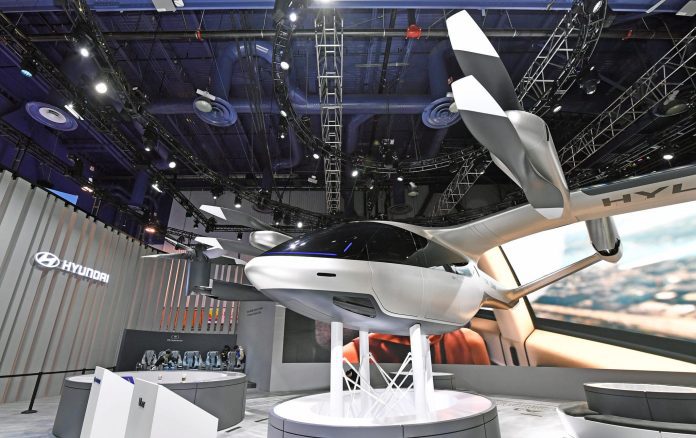For a time, electronics shows were dominated by handheld devices. The biggest and most glam stands belonged to smartphone makers. It seems almost passé now, and more interesting for it, as the miniaturisation and acceleration of computing has exploded tech into new industrial realms.
In terms of consumer electronics, at least, this advancement has seen devices grow larger, too, and capable potentially of housing massive compute power. Nowhere is this more evident – and neccessary – than in the automotive sector.
Cars, last century’s most powerful objects of desire and status (and potent symbols of climate change), present a new canvas for the tech industry to paint this century’s future, as digital and sustainable.
Case in point: the sci-fi-like vehicles on the show floor at CES in Las Vegas this week, just like most other trade fairs of the last decade. Ppreposterous visions of flying cars and hotels-on-wheels punctuate the ennui of all the gadget stands, which used to draw the biggest gasps.
Not any more. Everyone is taking photos of battery-powered, self-driving, gull-winged, hair-brained motor cars. At CES, South Korean manufacturer Hyundai offered up its version of smart cars on smart roads, joining the likes of BMW at the same event. Toyota has also been at it this week, with its own vision for a smart city.
Like others, the results look like the work of a big-sky creative agency, working with some light-touch strategic input. Still, it is fun, and worth a summary, here, as it addresses key subjects: intelligent transportation, smart cities, and future sustainability (and adds colour to the industrial narrative about the jockeying for position between the automotive giants and the tech set).
Hyundai has been showcasing three solutions for future mobility at CES, it said. The first comprises ’personal air vehicles’ (PAVs, or flying cars, basically), working as part of ‘urban air mobility’ (UAM) services.
The second solution is categorised as ‘purpose built vehicles’ (PBVs) – described as “ground-based eco-friendly mobility solution(s) that provide customized spaces and services for passengers in transit”. These work, effectively, like a local bus service, except with coffee on tap, and a reliable wi-fi signal, to carry passengers to PAV take-off.
The third solution, mocked up in slide decks, is called a ‘Hub’, which is described as “a place for mobility transfer and community activities”. A station, then, for whatever future mode of transport you are taking. Something and nothing? Yes, except Hyundai has also announced an aerial ride-sharing deal with Uber Elevate, the taxi company’s passenger drone project, which aims to have flight demos this year and commercial fares in 2023.
The pair said they will develop ‘Uber Air Taxis’ together, showing off the full-scale PAV concept at CES. The arrangement will see Hyundai produce and deploy the “air vehicles”, and Uber provide “airspace support services, connections to ground transportation, and customer interfaces through an aerial ride share network”.
Two companies talking about Bladerunner style flying taxis brings a little weight to the narrative, even if the first limited pilots of drone deliveries are only just taking off, and air space is a hotly contested and highly regulated area.
Jaiwon Shin, executive vice president and head of UAM at Hyundai, commented. “We expect UAM to vitalize urban communities and provide more quality time to people. We are confident that Uber Elevate is the right partner to make this innovative product readily available to as many customers as possible.”
Eric Allison, head of Uber Elevate, said: “Hyundai is our first vehicle partner with experience of manufacturing passenger cars on a global scale. Hyundai has the potential to build Uber Air vehicles at rates unseen in the current aerospace industry, producing high quality, reliable aircraft at high volumes to drive down passenger costs per trip.”
The S-A1 model PAV was on the showfloor in Las Vegas. It uses the same electric vertical take-off and landing (eVTOL) designs Uber Elevate has released previously. It is designed for a cruising speed of 180 miles per hour (290 kilometres per hour), a cruising altitude of 1,000-2,000 feet (300-600 metres), and flight distance of 60 miles (100 kilometres).
S-A1 will require about five to seven minutes for recharging, said Hyundai. It will carry up to four passengers. It is designed to take off vertically, transition to wing-borne lift in cruise, and then transition back to vertical flight to land. It will be piloted initially, but transition to autonomous flying “over time”.
Sounds good on paper; looks good in show

